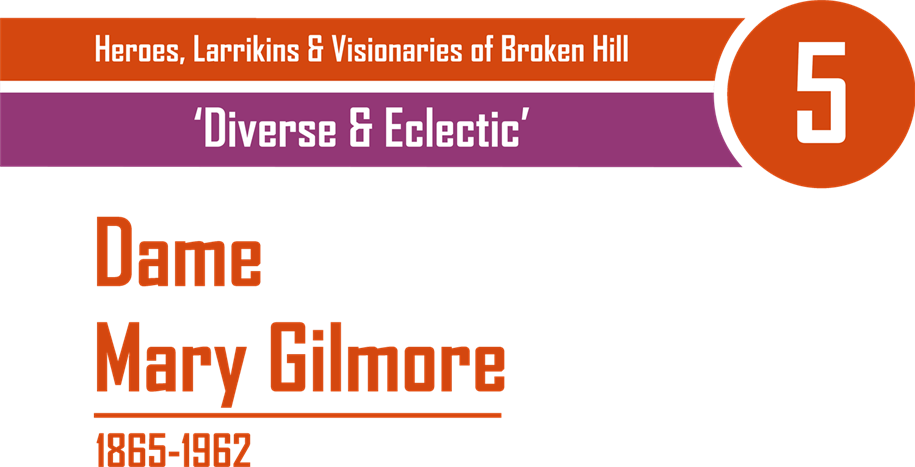Dame Mary Gilmore

Mary Gilmore qualified as a school teacher when she was sixteen and took up a teaching position in Silverton, near Broken Hill. It was here, during the first miner’s strikes, that her socialist views were formed, and where she joined the Labor movement and started writing poetry. She became an ardent supporter of the worker and, eventually, the first female member of the Australian Workers Union.
Born in rural NSW, near Goulburn, the young Mary Gilmore had an itinerant childhood in small bush settlements including Wagga Wagga. After her post at Silverton, she went to Sydney where she became a journalist, author, activist and poet. She was published in The Bulletin, The Sydney Morning Herald and The Tribune – the official Communist party paper. She became the Women’s Editor for The Worker, the publication of the Australian Worker’s Union, through which she championed and campaigned for multiple causes, including votes for women and pensions for the elderly, invalids and returned servicemen. Her poem Gallipoli appeared in a volume of poetry titled The Passionate Heart, royalties from which she donated to soldiers blinded during the Great War. She wrote about poverty and against capitalism. She was, throughout her life, a defender of the First Nations people and their right to be treated with dignity and respect.
Gilmore admired and was influenced by Henry Lawson, another socialist poet. They met around 1890 and became ‘unofficially engaged’, but the relationship didn’t last. In 1893, her ideology took her to Paraguay, in South America, where the New Australian Colony held promise of utopian socialism. She returned nine years later, disappointed but with plenty of material for the long literary career that followed.
Mary Gilmore’s ‘contributions to Australian literature and social reform’ were nationally acknowledged in 1939 when she was awarded a DBE (Commander of the Order of the British Empire), becoming Dame Mary Gilmore. She was a prolific writer until the end of her long, remarkable life, her final volume of poetry published when she was close to ninety.
Dame Mary Gilmore is honoured, along with Banjo Patterson, by having her portrait printed on the Australian ten dollar note.